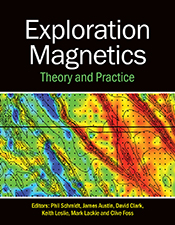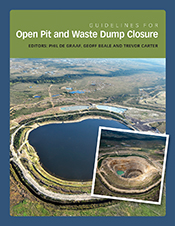Exploration Magnetics
Theory and Practice
Edited by: Phil Schmidt, James Austin, David Clark, Keith Leslie, Mark Lackie, Clive FossAn essential resource for geophysicists, geoscientists and geological mapping agencies.
Exploration Magnetics provides a comprehensive review of the application of magnetisation and magnetic field studies to mineral exploration. It investigates how subsurface models of magnetisation properties and distribution can be derived from magnetic field data. The book also covers geological controls on magnetisation, including linkage between magnetisation and mineralisation, illustrates the magnetic field expression of those magnetisations and explains how to recognise them. + Full description
Understanding rock magnetism and its relationship to mineralisation is more important than ever, given the difficulties of migration to areas of deeper cover in the search for new deposits, as well as the search for different styles of mineralisation involving the critical metals of the future.
Magnetic methods are at the forefront of mineral exploration in Australia, and the editors of Exploration Magnetics are world-class experts who have led the development and application of mineral exploration techniques, methods and adaption of new technologies. Drawing information from multiple sources, the contributing authors focus on the practical solution of problems, present extensive case study applications and explore the recovery of source magnetisation direction from magnetic field data. They also outline adaption of these magnetic methods for future off-world exploration.
- Short descriptionDetails
Paperback | June 2025 | $120.00ISBN: 9781486315574 | 320 pages | 270 x 210 mm
Publisher: CSIRO Publishing
Illustrations
Features
- Includes practical case studies from geological mapping and mineral exploration projects.
- Provides considerable synthesis of information and understanding in a single text.
- Contains insights from expert authors with many years of extensive experience.
Contents
Preface1 Introduction
Section 1: Location of magnetisation by magnetic field inversion
2 Data selection and optimisation for magnetic field inversion
3 Sweet-spot estimation of depth to the top of magnetisation
4 Empirical measures of proximal and distal magnetic fields
Section 2: Estimation of magnetisation direction from magnetic field analysis and inversion
5 Expression of remanent magnetisation in magnetic field data: recognition, analysis and inversion
6 The influence of source location, shape and plunge in recovery of magnetisation direction from magnetic field data
7 Estimation of magnetisation direction from axial magnetic field component and gradient tensor element ratios of a dipole source
8 Estimation of magnetisation direction by magnetic component symmetry analysis
9 Bz,z peak and trough analysis for rapid mapping of magnetisation direction
10 Improved constraint of magnetisation direction from UAV surveys of under-sampled aeromagnetic anomalies
11 Magnetic anomalies of terrain-delimited magnetisations in northern New South Wales as a training set for Martian magnetic field mapping
12 Magnetisation deficit anomalies
13 Magnetisation excavation anomalies over the Tasmanian dolerites and application to magnetic modelling of small Martian impact craters
14 Estimation of magnetisation direction from tripole and quadrupole anomalies in low inclination fields
15 The Australian Remanent Anomalies Database as a precursor to a global database
Index
Authors
Phil Schmidt has led palaeomagnetic studies in Australia for over 40 years and, together with David Clark, has conducted rock magnetic studies in all major Australian mineral provinces.
James Austin has developed world-leading capabilities in linking magnetic petrophysics with electron scanning microscopy to understand how mineral system processes relate to geophysical signatures.
David Clark has a unique combination in understanding rock magnetism and potential fields and is a pioneer of magnetic tensor gradiometry.
Keith Leslie has worked for over 25 years in the CSIRO SQUID group developing new geophysical instrumentation.
Mark Lackie has extensive experience in undertaking palaeomagnetic and environmental magnetic studies.
Clive Foss is a leading proponent in recovery of magnetisation information from magnetic field data and has worked extensively in minerals and petroleum exploration.








